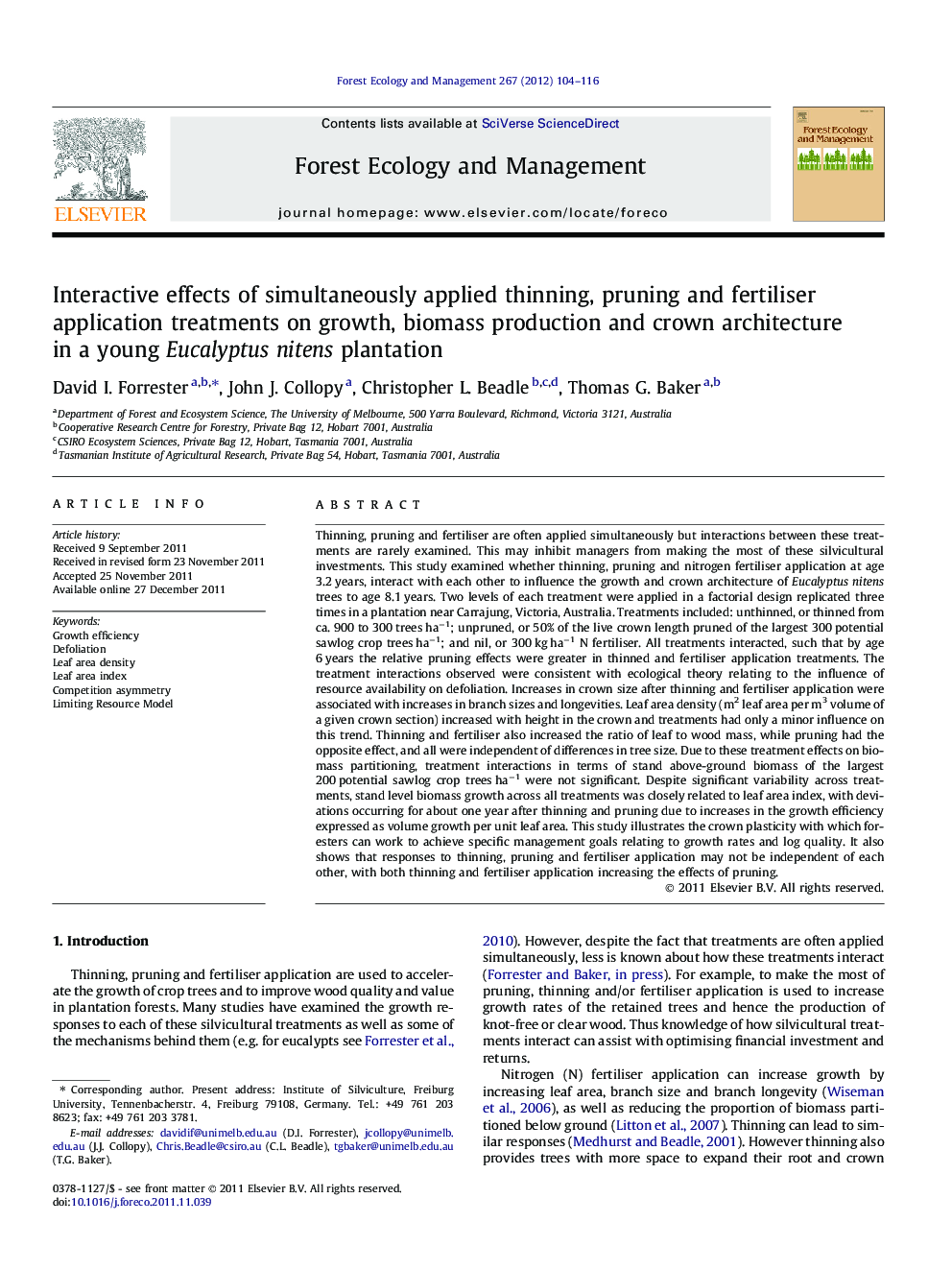| کد مقاله | کد نشریه | سال انتشار | مقاله انگلیسی | نسخه تمام متن |
|---|---|---|---|---|
| 87615 | 159258 | 2012 | 13 صفحه PDF | دانلود رایگان |

Thinning, pruning and fertiliser are often applied simultaneously but interactions between these treatments are rarely examined. This may inhibit managers from making the most of these silvicultural investments. This study examined whether thinning, pruning and nitrogen fertiliser application at age 3.2 years, interact with each other to influence the growth and crown architecture of Eucalyptus nitens trees to age 8.1 years. Two levels of each treatment were applied in a factorial design replicated three times in a plantation near Carrajung, Victoria, Australia. Treatments included: unthinned, or thinned from ca. 900 to 300 trees ha−1; unpruned, or 50% of the live crown length pruned of the largest 300 potential sawlog crop trees ha−1; and nil, or 300 kg ha−1 N fertiliser. All treatments interacted, such that by age 6 years the relative pruning effects were greater in thinned and fertiliser application treatments. The treatment interactions observed were consistent with ecological theory relating to the influence of resource availability on defoliation. Increases in crown size after thinning and fertiliser application were associated with increases in branch sizes and longevities. Leaf area density (m2 leaf area per m3 volume of a given crown section) increased with height in the crown and treatments had only a minor influence on this trend. Thinning and fertiliser also increased the ratio of leaf to wood mass, while pruning had the opposite effect, and all were independent of differences in tree size. Due to these treatment effects on biomass partitioning, treatment interactions in terms of stand above-ground biomass of the largest 200 potential sawlog crop trees ha−1 were not significant. Despite significant variability across treatments, stand level biomass growth across all treatments was closely related to leaf area index, with deviations occurring for about one year after thinning and pruning due to increases in the growth efficiency expressed as volume growth per unit leaf area. This study illustrates the crown plasticity with which foresters can work to achieve specific management goals relating to growth rates and log quality. It also shows that responses to thinning, pruning and fertiliser application may not be independent of each other, with both thinning and fertiliser application increasing the effects of pruning.
► Thinning, pruning, fertiliser and their interactions were examined in an Eucalyptus nitens plantation.
► Crop tree growth and crown sizes were increased by thinning and fertiliser but reduced by pruning.
► Interactions between treatments were consistent with ecological theory.
► Pruning effects were greater in thinned or fertilised stands than unthinned or unfertilised stands.
► Leaf area densities increased towards the top of the crowns but varied little due to treatments.
Journal: Forest Ecology and Management - Volume 267, 1 March 2012, Pages 104–116